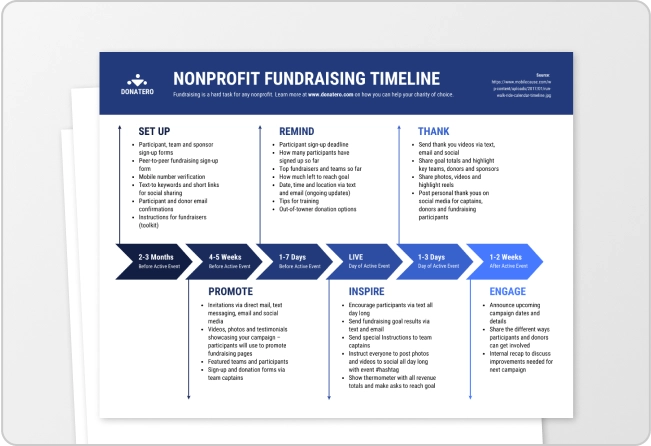OSCAR WINNERS
1980-2015
ACTORS
![]()
![]()
U.S. MALE POPULATION
![]()
ACTRESSES
![]()
![]()
U.S. FEMALE POPULATION
![]()
Fact 1: The Lost Oscar
In 1940, Hattie McDaniel became the first black person to win an Oscar for her role as a maid (“Mammy”) in Gone with the Wind. Just months earlier, Jim Crow laws had barred her and other black actors from attending the movie’s premiere at Loew’s Grand Theater in Atlanta, Georgia. While accepting her award for Best Supporting Actress, Hattie thanked the academy members and barely able to hold back her tears, added,
“I sincerely hope I shall always be a credit to my race and to the motion picture industry. My heart is too full to tell you just how I feel, and may I say thank you and God bless you.” [1]
She then walked all the way to the back of the banquet hall to a small round table that she shared with her escort, Ferdinand Yober, segregated from the rest of the white guests and the Gone with the Wind cast. [2]
Six decades later, no one knows for sure where Hattie McDaniel’s Oscar is. Though she bequeathed it to Howard University in her will, and the Oscar was indeed displayed there momentarily during the 1960s, its current whereabouts is a mystery. One popular opinion is that it was stolen by an angry mob during the 1968 civil rights unrest and tossed into the Potomac River as an act of protest. [5] On March 18, 2011, an eBay auction listed an “Extremely Rare and Authentic Academy Award Statue” with remarkable resemblance to the original Oscar plaque that Hattie had won.[6] A more sensible theory is that the Oscar was returned to Howard University’s Pollock Collection during the 1970s–but no one knows for sure. [7]
Fact 2: #OscarsSoWhite
It would be another 24 years before Sidney Poitier became the next black actor to win an Oscar for acting in 1963. It would take another 27 years after that for another black woman, Whoopi Goldberg, to win an award for her role in Ghost.
So how diverse has the Oscars been for actors historically and what progress has been made in recent decades?
To find out, we looked at winners for all acting categories–Best Actor in a Leading Role, Best Actor in a Supporting Role, Best Actress in a Leading Role, and Best Actress in a Supporting Role (some earlier years had honorary or special awards for acting as well). As the chart above shows, wins for minorities were far and few between until the early 1980s, where we began to see consistent wins by actors of color.
To analyze the period between 1980 until now, we created an interactive “Oscar Winners” data visualization that allows you to explore each winner, their roles and the aggregate percentage of the total of each race. (See data visualization at the top of the page)
For the men’s categories, white actors won 84% of the awards, followed by black actors at 10%. Hispanic actors and asian actors tied at 3% each. For the women’s categories, white actresses won 89% of the awards, followed by black actresses at 9% and hispanic actresses at 3%. There have been no Native American winners and historically, only two Native American actors have even been nominated for Best Actor in a Supporting Role–Chief Dan George for his role in Little Big Man and Graham Greene for his role in Dances with Wolves.
![]()
<img src="https://venngage.one/wp-content/uploads/2016/02/OSCAR-RACE-FINAL-1024x1024.png" alt="[INFOGRAPHIC] Oscar Winners by Race"/><a href="https://venngage.one/blog/oscar-racism-interactive-infographic">[Infographic] Oscar Winners by Race </a> by Venngage.
Not surprisingly, when compared to the racial breakdown of the US population (census 2010), the number of white actors winning Oscars showed a disproportionate overrepresentation. Black actors were underrepresented, though not nearly so much so as hispanic actors. Hispanics make up around 16% of the US population but represented only 3% of Oscar winners.
The discrepancies were even more noticeable when we look at the percentages by gender. Women of color fared a lot worse than their male counterparts. White women ruled the Oscars, winning almost nine of out 10 times since the 1980s. Again, this isn’t surprising. When was the last time you saw a woman of color headlining a movie?
Fact 3: Winning Roles are Mainly Stereotypes
When Hattie McDaniel won the first black Oscar for playing a maid in Gone with the Wind, the response from her community was divided. Her friend and fellow actor, Clarence Muse, discouraged blacks from seeing Gone with the Wind. [8]
The NAACP and Howard University also objected to the movie, which was based on a book that criticized the Civil War and opponents of slavery, while casting the KKK as saviors of the white race. McDaniel’s character, Mammy, was a common stereotype perpetuated by Hollywood where “respectable black women had to serve white families loyally as domestics, with little reference to their own families, and were often cast as asexual, unattractive, and plump.” [9] Winning the Oscar typecast McDaniel into the Mammy role–she went on to play a maid in many other movies.
The “Mammy” stereotype is just one of the many racial stereotypes in film and television. A very brief overview of common racial stereotypes in movies with example roles:
![]()
Are racial stereotypes common in Oscar winning roles? Certainly this was true in the early years of the Oscars, as McDaniel’s “Mammy” role exemplified. But how about in recent decades–from 1980 to today?
To dig deeper into stereotypes we analyzed each non-white Oscar winner’s role since 1980 and categorized them into three types–Stereotype, No Stereotype and Famous Person. The “Stereotype” category meant we thought the role fit into one of the common racial stereotypes. The “No Stereotype” category meant the role didn’t fit into a stereotype. We also added a “Famous Person” category, as many of these roles were depictions of real famous figures. We used the common racial stereotypes mentioned above as a framework for our analysis.
We found out that more than half (55%) of the roles could be considered racial stereotypes. Only a quarter of the roles did not fit into a stereotype. The remaining were roles depicting real famous people. Among the stereotypical roles, we further broke them down to see which types of roles were the most common among Oscar winning roles.
There were no clear outliers here but female stereotypes (Mammy, Sapphire/Jezebel) were the most common.
It is important to acknowledge that the categorization of role types is, to a certain extent, a subjective judgement call. The complete breakdown of stereotypical roles is in the table below:
Fact 4: Minority Lead Actors Have to Play Famous People
When we looked at Oscar winners in the Best Actor/Actress in a Leading Role categories by race, we saw an even more disproportionate picture. Oscar winners for leading roles were 93% white, 6% were black and 1% asian. There were no hispanic or Native American winners at all.
In fact, there are only five persons of color who have won Best Actor/Actress in a Leading Role since 1980. Four of them are men–Forest Whitaker (as Idi Amin in The Last King of Scotland), Jamie Foxx (as Ray Charles in Ray), Denzel Washington (as Alonzo in Training Day), and Ben Kingsley (as Gandhi in Gandhi)–and only one of them is a woman, Halle Berry (as Leticia in Monster’s Ball).
Three of the winners played famous figures (Idi Amin, Ray Charles and Gandhi). The other two were roles of racial stereotypes. Clearly, if you want to win an Oscar in a lead role as a minority, you should play a role of a famous person. Marc Bernardin, in a piece about racism in Hollywood, recently quipped, “The awards-targeted films today that get a minority protagonist tend to be about the most amazing person of that race who’s ever lived.”
There is some truth in that–Gandhi was one of the world’s most amazing leaders, and Ray Charles is a legend in the music world. Idi Amin was a notorious dictator so his role did not fit into this stereotype but one could argue that the real protagonist in the Last King of Scotland is actually the Scottish doctor played by James McAvoy (the story was told in his point of view).
Contrast these roles featuring exceptional people of color with the overwhelming number of roles featuring average white people becoming unexpectedly extraordinary (especially in the action/adventure genres) and the imbalance becomes more pronounced.
Fact 5: Main Protagonists are Overwhelmingly White
Since there have been so few minority actors in leading roles, another way to look at racial prejudice is to analyze the movies where minorities have won for Best Actor/Actress in a Supporting Role. Who was the main protagonist? What was the main story about?
Ten out of 14 of the minority actors who have won Best Actor/Actress in a Supporting Role were in roles supporting white protagonist(s) (many of which fit the bill for the “white savior” stereotype).
An example of this is Denzel Washington’s win for his supporting role in Glory, wherein the main protagonist was played by Matthew Broderick, a white colonel who led a black regimen during the Civil War. Or take Cuba Gooding, Jr’s supporting role in Jerry Maguire, which featured Tom Cruise as a dynamic agent who has an epiphany and changes his way of life (while Gooding’s role remains much more one-dimensional). Or take Penélope Cruz’s win for her supporting role in Vicky Cristina Barcelona, with Cruz’s character acting as a catalyst in Scarlett Johansson’s story of self-discovery.
Fact 6: Hollywood Studios are Old White Boys Clubs
How do you account for the imbalance between the representation of white actors and actors of color in the Academy Awards, particularly in 2015 and 2016?
Last year, in an interview on Good Morning America, Spike Lee drew attention to a larger systemic lack of diversity within the film industry: “It goes further than the Academy Awards. It has to go back to the gatekeepers….We’re not in the room. The executives, when they have these green-light meetings quarterly, where they look at the scripts and they decide what we’re making and what we’re not making.”
This comment came after his announcement that he would not be attending the Academy Awards that year as an act of protest.
A couple of studies have dug into the wider systemic factors that contribute to a lack of diverse representation not just at award shows, but in mainstream film in general. Their findings show a significant lack of diversity from the beginning of a movie’s production.
According to a 2015 Hollywood Diversity Report done at the Ralph J. Bunche Center for African American Studies at UCLA, the majority of film executives are, on all accounts, white. Of the 6,000 or so Academy voting members, 94% were are white and 100% were male. Film studio senior management were 92% white and 83% were male. And film studio unit heads were 96% white and 61% male. These are the people deciding which scripts to green-light, which films to fund and who to cast; this implies one dominant set of perspectives and, in turn, connotes a bias.
film executive positionsInfographic
According to a study done by University of Southern California, only seven out of the 107 directors attached to the top 100 grossing films of 2013 were black (two of which were repeats, meaning there were only five unique black directors). There were no black woman directors in the top 100 grossing films in 2013. The study also found that films with white directors were responsible for casting black characters in only 10.8% of all speaking roles, while black directors cast black characters in 46% of all of speaking roles. This suggests that there is a correlation between the ethnic background of a director and the ethnic backgrounds of the actors cast in their films.
speaking roles by ethnic backgroundInfographic
Despite the majority of film executives and directors being white (and male), the UCLA report notes that while only 11% of American and Canadian populations are frequent moviegoers, 51% of movie ticket buyers in America and Canada are ethnic minorities.
That there is still such a diversity gap not just in the case of actors recognized at awards shows, but also on the production and executive side of the industry, points to a greater systemic lack of representation.
How many Oscars are lost?
Hattie McDaniel’s Oscar isn’t the only one that’s missing.
Last year, the failure to nominate Idris Elba for his role in Beasts of No Nation was met with collective disbelief. The same went for Abraham Attah’s role in the same movie, Karidja Touré’s role in Girlhood, Oscar Isaac’s role in Ex Machina, John Boyega’s role in Star Wars: The Force Awakens, Ryan Coogler’s role in Creed, and Jason Mitchell’s role in Straight Outta Compton.
This year, greater effort has been put into more diverse representation at the Oscars.
In response to the #OscarsSoWhite controversy last year, Cheryl Boone announced this week that she has invited 638 new members to the Academy. Of the new additions, 46% were women and 41% were women of color–an improvement on the 75% male and 92% white membership prior.
This would bring the percentage of male Academy members down to 73% and the number of white Academy members down to 89%.
The list of nominations this year is also much more diverse compared to last year: of the 20 actors nominated for award, seven are people of color. This is largely due to the nomination of movies like Hidden Figures, Fences, Moonlight and Loving, which tell stories focusing on people of color.
But there is still plenty of room for more diversity.
According to a USC Annenberg annual report on diversity in the film industry, women still hold only 28.7% of all speaking roles in film, and people in underrepresented racial groups hold only 26.7% of speaking parts in movies.
Still, steps are being taken. If this momentum is kept up, imagine what the Oscars could look like in 2027.
References
- Hattie McDaniel winning Best Supporting Actress. YouTube https://www.youtube.com/watch?v=e7t4pTNZshA
- Finding the Oscar. 55 Howard Law Journal 107-171 (2011) . pp 115-116
- Finding the Oscar. 55 Howard Law Journal 107-171 (2011) . pp 113
- Wikipedia. https://en.wikipedia.org/wiki/Hattie_McDaniel
- Tom Gregory, Oscar time for Hattie McDaniel, Huffington Post (5/23/2011) http://www.huffingtonpost.com/tom-gregory/oscar-time-for-hattie-mcd_b_60228.html
- See http://www.worthpoint.com/worthopedia/exceedingly-authentic-academy-award-137828383
- Finding the Oscar. 55 Howard Law Journal 107-171 (2011). pp 163
- Finding the Oscar. 55 Howard Law Journal 107-171 (2011). pp 119
- Finding the Oscar. 55 Howard Law Journal 107-171 (2011). pp 113
- The data used in all the data visualization can be found at https://github.com/Venngage/02-2016-Oscars-Race
Update: The percentage of Academy voters who are white was incorrectly cited. The percentage has been amended. Our regrets for the error.







































